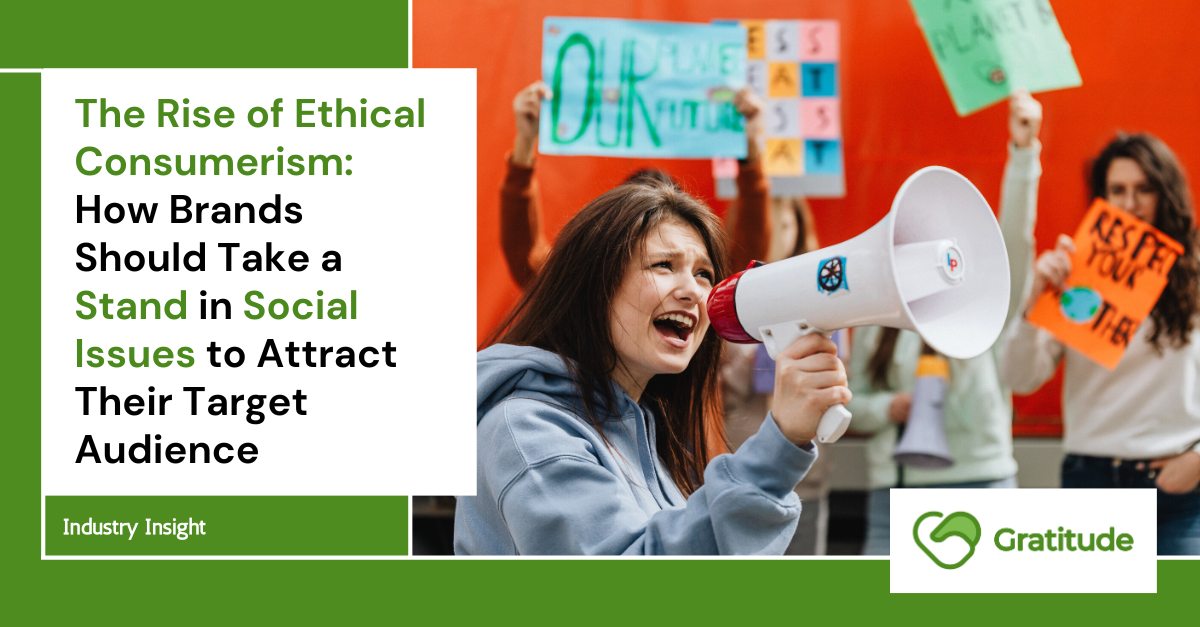In today’s connected world, the voice of the consumer holds unprecedented power. Through various social media platforms, consumers can rally behind a cause, pushing companies to take action or change behaviors. One key area where this dynamic is evident is brand activism, where consumers’ social, environmental, or political beliefs influence their purchasing decisions. Let’s delve into how activism on brands can affect sales and explore some notable examples.
1. Positive Brand Image Equals Positive Sales Growth
A study by Cone Communications found that more than 90% of shoppers would switch to a cause-branded product if the price and quality were similar to a non-cause-branded product. This suggests that when brands align with causes or take stands that resonate with their customers’ values, they have the potential to increase their market share.
Example: Patagonia, an outdoor clothing brand, has long stood as an advocate for environmental causes. Their commitment to sustainable practices and their proactive stance on environmental issues has solidified their reputation as a socially responsible brand. As a result, many environmentally-conscious consumers prefer Patagonia over other brands, leading to increased sales and loyalty.
2. Negative Publicity Can Lead to Decreased Sales
While positive brand activism can lead to sales growth, negative publicity or perceived hypocrisy can have the opposite effect. A study from the University of Cambridge Judge Business School suggests that negative news about a company can lead to an average 0.6% drop in weekly sales.
Example: In 2017, Pepsi released an advertisement featuring Kendall Jenner, which attempted to tap into the zeitgeist of protest movements. However, many perceived the ad as trivializing the Black Lives Matter movement. The subsequent backlash led Pepsi to pull the ad, and it undoubtedly impacted their brand image, at least in the short term.
3. Brand Neutrality Isn’t Always Safe
Remaining neutral and avoiding taking a stance on social issues can be detrimental for brands, especially when their core audience expects them to have a voice. A 2020 study by Sprout Social found that 66% of consumers believed that brands should take public stands on political and social issues.
Example: In the wake of the Black Lives Matter movement’s resurgence in 2020, many brands voiced their support. Those who remained silent or gave generic statements were often called out by consumers for their neutrality, which, in some cases, led to calls for boycotts or negatively impacted consumer perception.
4. The Rise of Ethical Consumerism
Increasingly, consumers are evaluating their purchases based on the ethical behavior of brands. This includes everything from sustainability practices to workers’ rights. Ethical consumerism means that brands that align with these values can see a positive boost in sales. A 2019 report by Nielsen found that products from brands with a demonstrated commitment to sustainability grew more than 5% faster than those without.
Example: Brands like Lush Cosmetics, which emphasize ethical sourcing, cruelty-free testing, and environmental responsibility, have seen a surge in popularity as consumers prioritize these values.
In Conclusion:
Brands can no longer afford to ignore the wave of activism and the associated consumer expectations. With the rise of social media, brand reputations can be built or broken overnight. By understanding the dynamics at play and genuinely aligning with positive values, brands have an opportunity not just to boost sales but to make a meaningful difference in the world. But brand needs a way to effectively communicate their activism to their customer.
Gratitude can help!
Gratitude enables businesses to become transparent by being powered by blockchain technology, with easy-to-use tools to record their supply chain, narrate the story, verify on blockchain and present the data in a beautiful landing page that can be issued via Gratitude’s QR Code or URL that can be placed on a physical product or embedded on digital marketing campaign or label, even in hotels. With this QR code, brands can put in place localized material or descriptions of their product so that the product can quickly hit the shelves while the full localization in progress. Customers can then simply scan the QR codes placed on the product or click the link on a digital campaign and clearly see the product’s journey, verify sustainability claims, or even company and brand stories that the company wants to reveal to the customer in language that they are familiar with.
Begin your business’ true transparency journey by implementing Gratitude to unlock the hidden value of your supply chain data. Talk to our representatives via the following channels for support or assistance in implementation:
Website : https://more-gratitude.com
Twitter : https://www.twitter.com/more_gratitude
Linkedin : https://www.linkedin.com/company/more-gratitude
Instagram : https://www.instagram.com/more_gratitude/
Facebook : https://www.facebook.com/followgratitude
Medium : https://www.medium.com/@more_gratitude
Sign up to our exclusive newsletter for special offers and latest industry insight :

